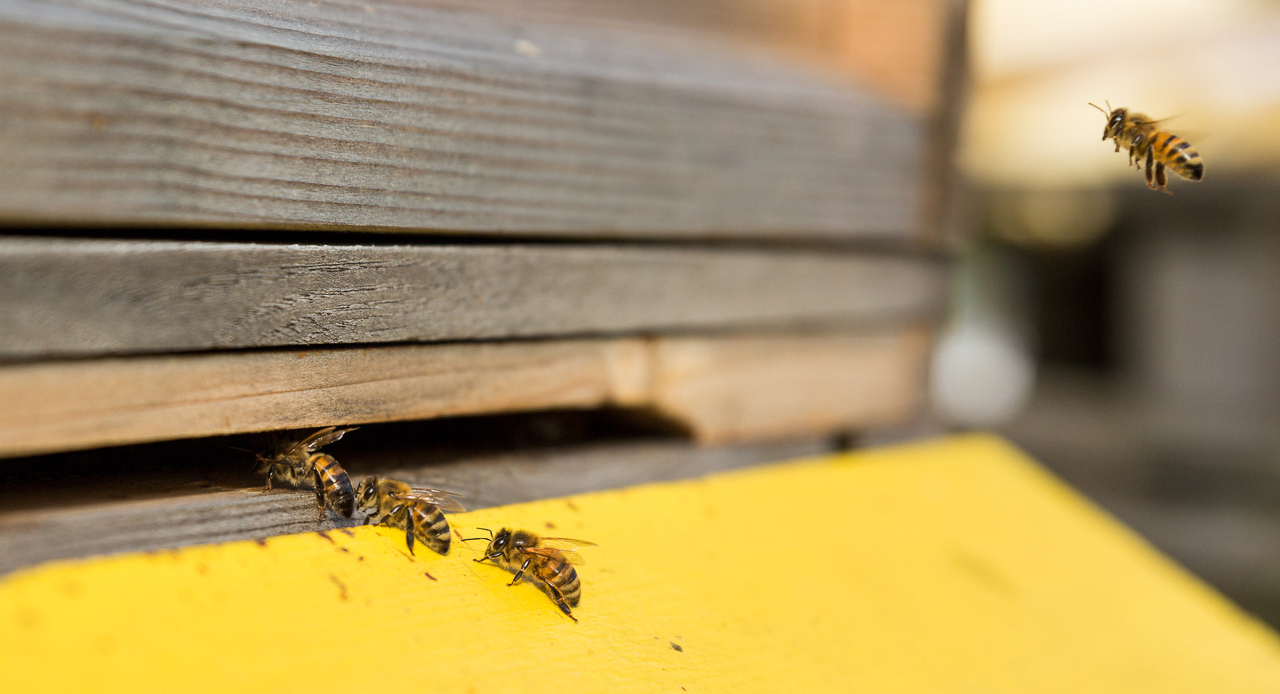Studying is as sweet as honey

When I arrive at the hives behind the Urban Garden on the Wilhelminenhof Campus, Linda is dressed in her beekeeper's shirt and is checking on the well-being of the bees. The smoker helps to calm the bees, even when their home is being turned upside down. Linda discovers a wasp that has started to build a nest inside the bee house. The nest is removed and the wasp flies away. Everything is as it should be.
Beekeeping is popular
15 students are taking the “Beekeeping in urban gardening” module at HTW Berlin this semester to learn all about the art of keeping bees. As many people wanted to sign up, the students had to apply by writing a letter of motivation. The group of students is diverse: Linda is studying Game Design, Kilian is studying Microsystems Technology, Andi is studying Business Computing, and Julia and Jakob are studying Communications Design. “Watchdog” Salithi is supporting the team without gaining any credit points. Some of the students have been involved since last semester. While the bees were hibernating over winter, they familiarised themselves with the theoretical principles of beekeeping. Now it’s springtime and time for the bees to search for food in the fields and chestnut trees in the neighbourhood. The especially hardy specimens make it all the way to Wuhlheide.
Climate change and monocultures
This year’s early summer temperatures are proving to be a big challenge for the bees. “Everything is blossoming at the same time. This makes it difficult for the bees to find food later in the season. Especially because at the moment they’re still very small, but later they’ll really need more nectar and pollen when they’re a little bigger,” explains Kilian. That’s one reason why the “bee meadow” is soon to be sown with a mix of flowering plants so they’ll have food almost all year round. In spring the dandelions will provide them with nectar and pollen, in summer there’s thyme and sage, and in autumn they can feast on cornflowers. “The bees actually have it a little easier in the city than they do in the countryside. Here they have a lot more variety, as agriculture is largely based on mono cultures,” says Linda. Right now a lot of rapeseed is blossoming in Brandenburg, but it will be harvested by July at the latest and then the fields will lay fallow. Grains and corn are also popular in the fields around Brandenburg and they’re harvested later, but they don’t offer the bees any nutrition because they don’t blossom.
Carnica and Buckfast peacefully side by side
If you can believe what you see on the internet, there’s currently something of a war going on between different beliefs about bees in Germany. Passionate debates are taking place in forums about which bees are the easiest to manage and produce the greatest yield. On the Wilhelminenhof Campus there are two types of bees living side by side: the Carinthia bees (Carnica), which are from the Alps, and the Buckfast bees, which are originally from England. Both breeds have two hives at HTW Berlin and they are both thought to be gentle. They differ with regard to their swarming instincts. While the Carnica bees are driven to divide their colonies in order to multiply, the Buckfast bees are rather sluggish in their swarming behaviour. However, the ‘Buckis’ are hardier when it comes to winter hibernation.